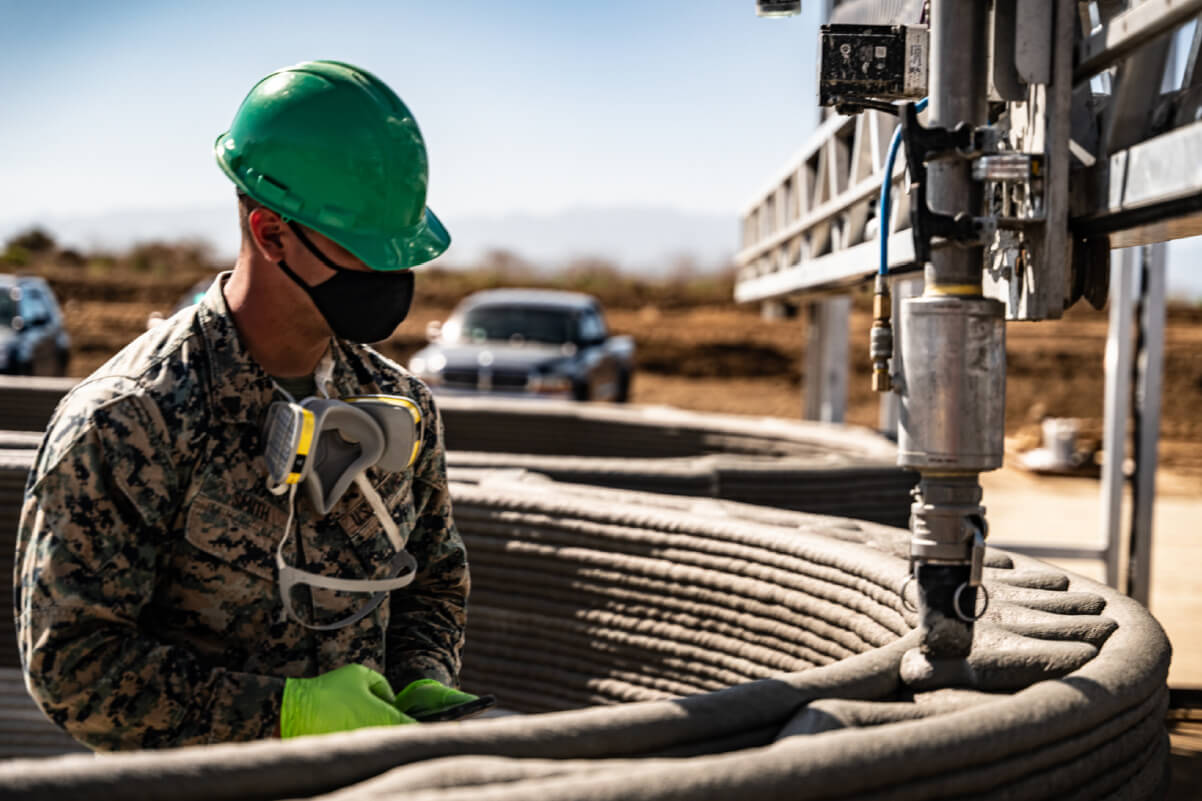This past August, Texas-based robotics and advanced materials startup ICON garnered headlines when it revealed what was then the largest completed project to date employing the company’s patented 3D-printed construction technology: a single-story barracks on the grounds of the Camp Swift Training Center in Bastrop, Texas. Created for the Texas Military Department, that structure, measuring a record-setting 3,800 square feet, was not only the largest for ICON, which has helmed everything from mass-market single-family residences to ersatz Martian habitats in its very busy five-year history, but also the largest 3D-printed building in all of North America.
Now, the United States Department of Defense (DoD) has announced that it has tapped ICON to construct three training barracks at the U.S. Army’s Fort Bliss in Texas and New Mexico that, when completed, will rank as the largest 3D-printed structures in the Western Hemisphere. Construction work on the trio of 5,700-square-foot buildings, designed by Austin’s Logan Architecture, is expected to take under 10 months.
The public-private project is being led by the DoD’s Defense Innovation Unit (DIU) and will be the first 3D-printed project from America’s largest governmental agency to comply with its new Unified Facilities Criteria for additive concrete construction. As noted by the DoD, its United Facility Criteria did previously not include specifications for 3D-printed concrete wall systems; this, in turn, prevented “any companies that used this novel approach to construction from bidding on DOD construction projects and preventing DOD from leveraging the efficiencies gained from this technique.”
“Constructing facilities using this cutting-edge technology saves labor costs, reduces planning time, and increases the speed of construction of future facilities,” said Army Lt. Gen. Doug Gabram, commander of U.S. Army Installation Management Command, in a statement. “We are looking at other ways to use this innovative technique for rapid construction of other types of facilities beyond barracks.”

Like with smaller, non-military ICON projects completed with private residential developers, the 3D-printed Fort Bliss barracks will be built using the company’s gantry-style robotic printer, Vulcan, and Lavacrete, a proprietary construction material composed of Portland cement, fillers, supplementary cementitious materials, and what ICON calls “advanced additives” that help its 3D-printed structures withstand harsh climatic conditions.
ICON’s partnership with the DoD (previously, the startup teamed with DIU to develop Marine Corp training structures at Camp Pendleton, California), isn’t the startup’s collaborative effort with a major governmental entity. In October 2020, ICON and Bjarke Ingels Group (BIG), joined by SEArch+, were tapped by NASA to help develop Project Olympus, a lunar colony-creating autonomous additive construction system. ICON and BIG also teamed with NASA for the aforementioned Martian colony created at the Johnson Space Center in Houston.
Back on Earth (and off base), Zero House, a newly completed 3D-printed home in East Austin that embraces a groovy mid-century aesthetic, will presented by ICON and project architect Lake|Flato at Facades+ Austin on April 27th.











